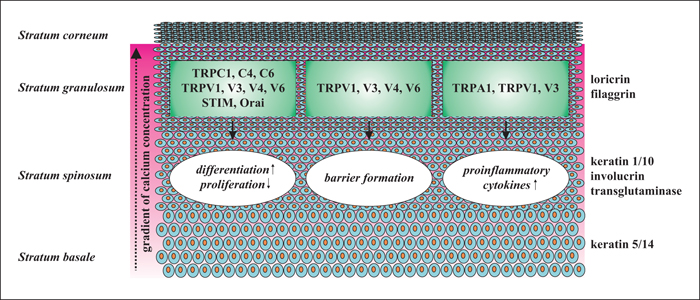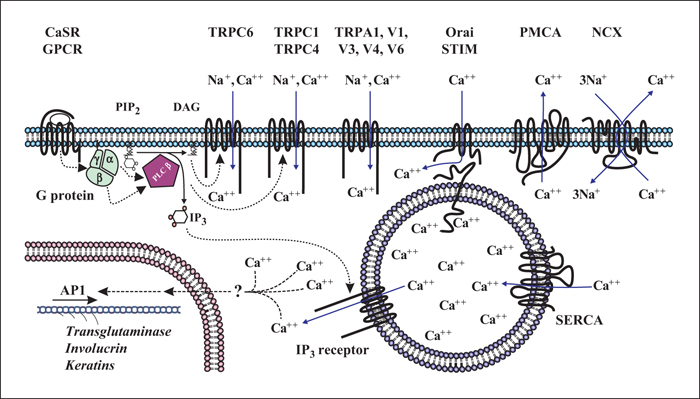European Journal of Dermatology
MENUCalcium - a central regulator of keratinocyte differentiation in health and disease Volume 24, numéro 6, November-December 2014
& Interfaculty Centre for Pharmacogenomics and Drug Research
Eberhard-Karls-University,
Tübingen, Germany
Friedrich-Alexander University Erlangen/Nuremberg,
Cauerstr. 4, 91058 Erlangen,
Germany
- Mots-clés : keratinocyte, differentiation, calcium, TRP channels
- DOI : 10.1684/ejd.2014.2452
- Page(s) : 650-61
- Année de parution : 2014
Regular keratinocyte differentiation is crucial for the formation of an intact epidermal barrier and is triggered by extracellular calcium. Disturbances of epidermal barrier formation and aberrant keratinocyte differentiation are involved in the pathophysiology of several skin diseases, such as psoriasis, atopic dermatitis, basal and squamous skin cancer, and genetic skin diseases such as Darier's disease and Olmstedt syndrome. In this review, we summarize current knowledge about the underlying molecular mechanisms of calcium-induced differentiation in keratinocytes. We provide an overview of calcium's genomic and non-genomic mechanisms to induce differentiation and discuss the calcium gradient in the epidermis, giving rise to cornified skin and lipid envelope formation. We focus on the calcium-sensing receptor, transient receptor potential channels, and STIM/Orai as the major constituents of calcium sensing and calcium entry in the keratinocytes. Finally, skin diseases linked to impaired differentiation will be discussed, paying special attention to disturbed TRP channel expression and TRP channel mutations.



